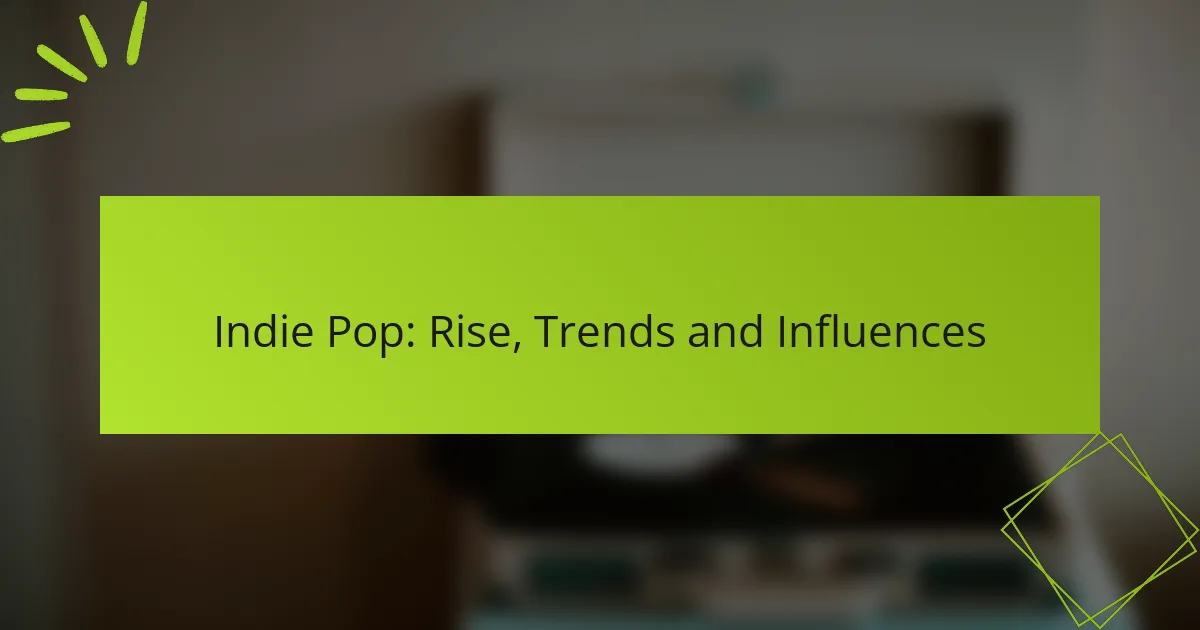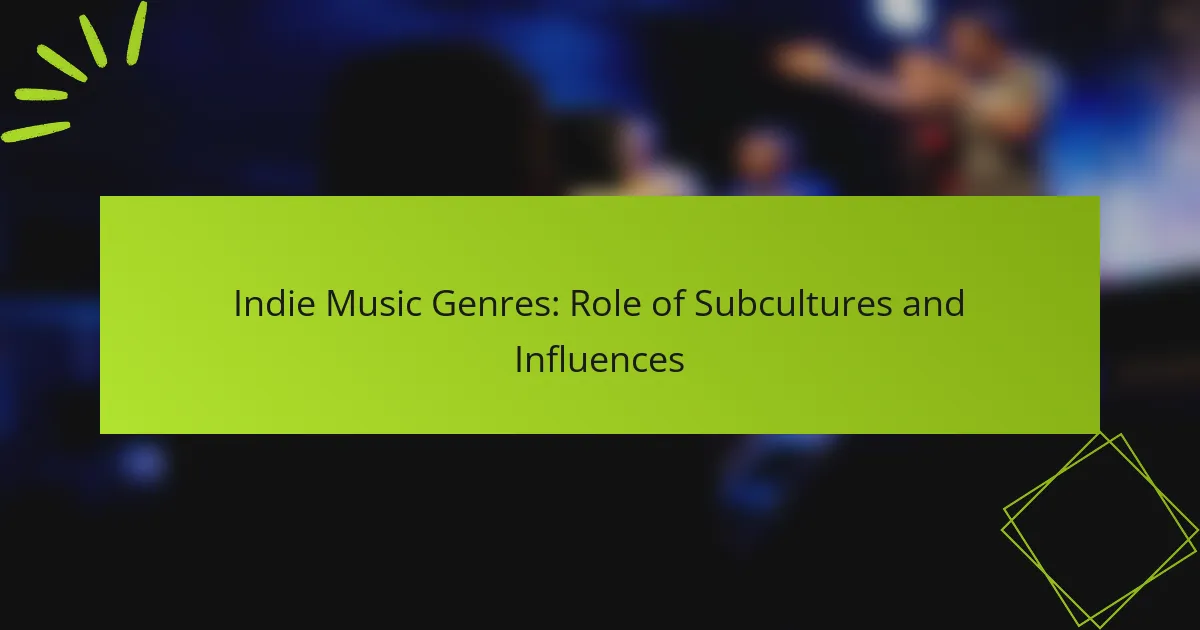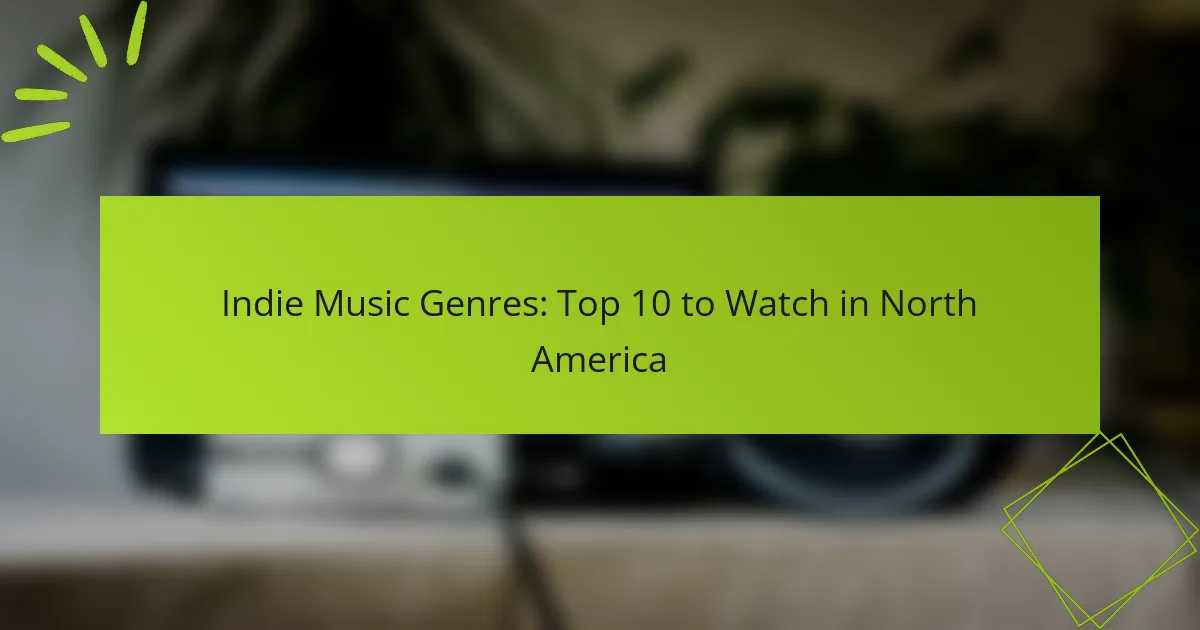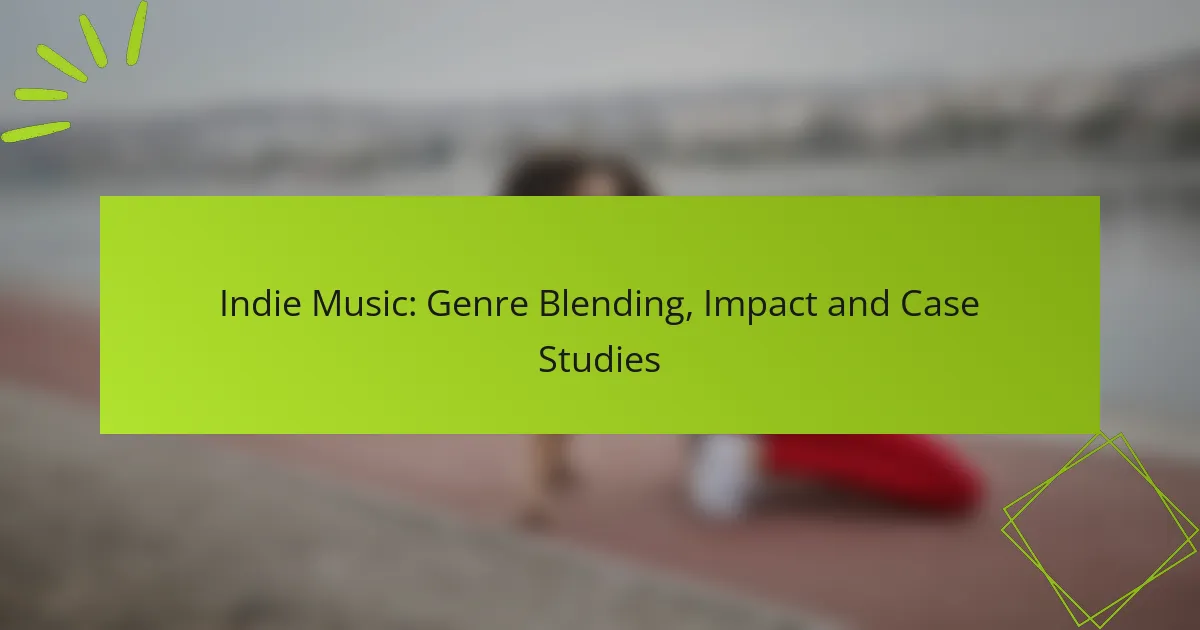Indie pop has evolved dramatically since its origins, shaped by a blend of musical influences and technological advancements. Today, the genre is characterized by its embrace of digital platforms, genre fusion, and DIY production, allowing artists to reach wider audiences while maintaining creative control. As indie pop continues to thrive, it reflects a diverse soundscape that draws from classic rock, folk, and contemporary electronic music.

What are the current trends in Indie Pop music?
Current trends in Indie Pop music highlight a shift towards digital platforms, genre blending, DIY production, and social media marketing. These elements are reshaping how artists create and promote their music, making it more accessible and diverse.
Increased use of digital platforms
The rise of digital platforms has transformed how Indie Pop artists distribute their music. Streaming services like Spotify and Apple Music allow musicians to reach global audiences without traditional record labels.
Artists can also utilize platforms like Bandcamp and SoundCloud to sell their music directly to fans, often keeping a larger share of the revenue. This shift has democratized music distribution, enabling more independent artists to thrive.
Blending of genres
Indie Pop is increasingly characterized by the blending of various musical genres. Artists often incorporate elements from rock, electronic, folk, and hip-hop, creating unique soundscapes that appeal to a wider audience.
This genre fusion allows for greater artistic expression and experimentation, leading to innovative tracks that defy traditional categorization. For example, collaborations between Indie Pop artists and electronic producers have become common, resulting in fresh sounds that resonate with listeners.
Focus on DIY production
DIY production has gained traction in the Indie Pop scene, with many artists opting to record and produce their music at home. Advances in technology and affordable recording equipment have made it easier for musicians to create high-quality tracks without the need for expensive studio time.
This trend not only reduces costs but also gives artists complete creative control over their work. Many successful Indie Pop albums have emerged from home studios, showcasing the potential of self-produced music.
Emphasis on social media marketing
Social media marketing plays a crucial role in promoting Indie Pop artists today. Platforms like Instagram, TikTok, and Twitter allow musicians to engage directly with their audience, share updates, and promote new releases.
Effective use of social media can significantly enhance an artist’s visibility and fan engagement. For instance, viral challenges on TikTok can lead to increased streams and sales, making it essential for artists to develop a strong online presence.
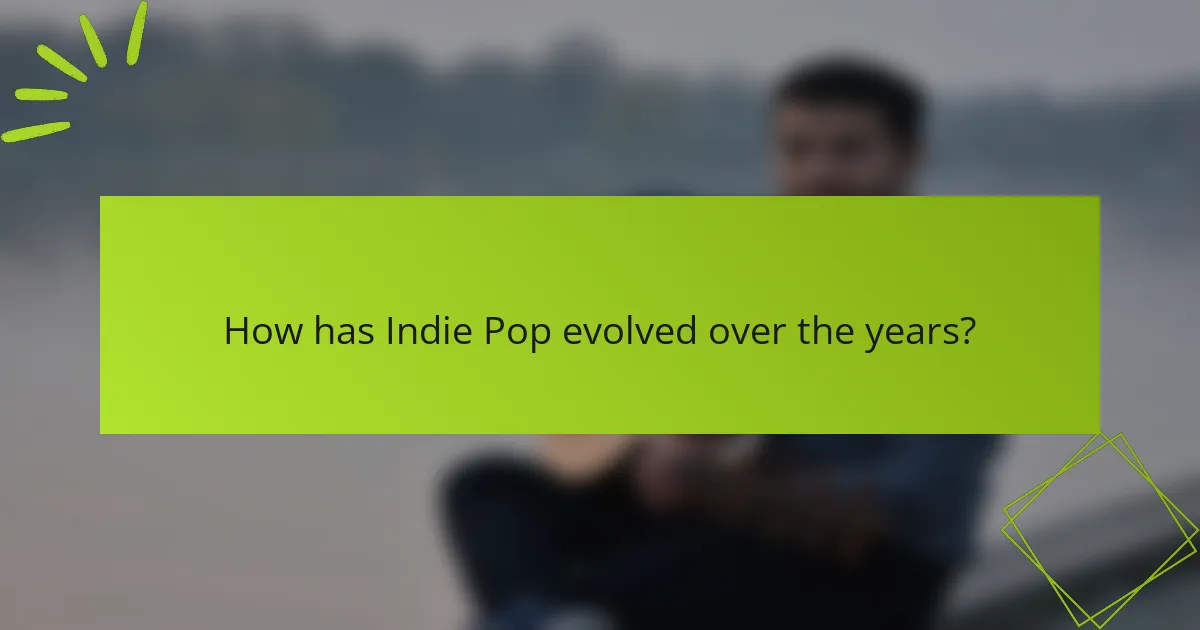
How has Indie Pop evolved over the years?
Indie pop has transformed significantly since its inception, influenced by various musical styles and technological advancements. From its roots in alternative rock to the impact of digital streaming, indie pop continues to adapt and thrive in the contemporary music landscape.
Roots in 1980s alternative rock
The origins of indie pop can be traced back to the 1980s alternative rock scene, where bands sought to create music outside the mainstream industry. This era saw the emergence of independent record labels that championed unique sounds, allowing artists to experiment with their styles.
Notable bands like The Smiths and R.E.M. blended melodic elements with introspective lyrics, setting the stage for future indie pop artists. Their influence is still evident in the music of today, as many contemporary indie pop acts draw inspiration from this foundational sound.
Influence of 1990s lo-fi aesthetics
The 1990s introduced lo-fi aesthetics to indie pop, characterized by a raw, unpolished sound that emphasized authenticity over commercial production. Artists like Beck and Neutral Milk Hotel embraced this approach, often recording in home studios to capture a more personal vibe.
This lo-fi movement encouraged a DIY ethic among musicians, leading to a surge of creativity and experimentation. The focus shifted towards songwriting and emotional resonance, allowing indie pop to connect deeply with listeners seeking something genuine.
Rise of streaming services in the 2000s
The advent of streaming services in the 2000s revolutionized how indie pop is consumed and distributed. Platforms like Spotify and Bandcamp provided artists with unprecedented access to global audiences without the need for traditional record deals.
This shift has democratized the music industry, enabling a diverse range of indie pop artists to gain visibility. As a result, listeners can discover new music easily, leading to a vibrant and varied indie pop scene that reflects a multitude of influences and styles.
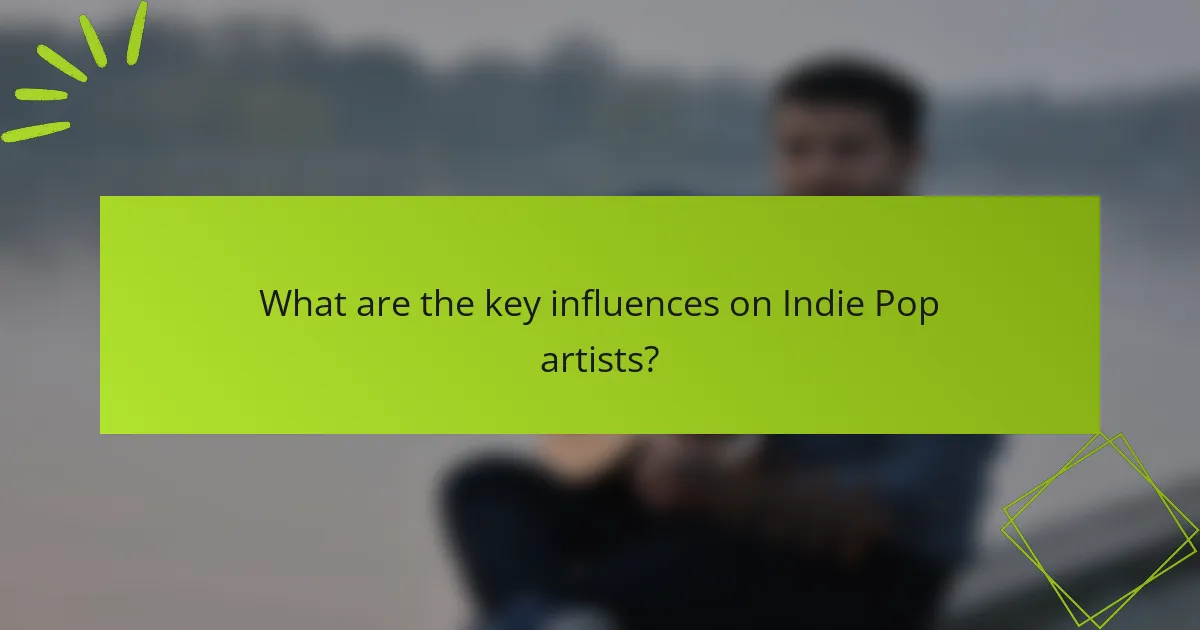
What are the key influences on Indie Pop artists?
Indie Pop artists draw from a diverse range of influences that shape their unique sound. Key influences include classic rock, folk music, contemporary electronic sounds, and global music trends, each contributing distinct elements to the genre.
Classic rock and folk music
Classic rock and folk music have significantly shaped the Indie Pop landscape. Artists often incorporate melodic structures and lyrical storytelling reminiscent of 1960s and 1970s rock, creating a nostalgic yet fresh sound.
For example, bands like Fleet Foxes and Mumford & Sons blend acoustic instrumentation with harmonies that echo traditional folk, appealing to both modern and classic music fans. This fusion allows Indie Pop to maintain a sense of authenticity while reaching a broad audience.
Contemporary electronic sounds
Contemporary electronic sounds have become increasingly prevalent in Indie Pop, introducing new textures and production techniques. Artists utilize synthesizers, drum machines, and digital effects to create catchy hooks and atmospheric soundscapes.
For instance, artists like CHVRCHES and Passion Pit exemplify this trend, merging electronic beats with pop melodies. This approach not only enhances the genre’s appeal but also allows for innovative experimentation in songwriting and arrangement.
Global music influences
Global music influences enrich Indie Pop by incorporating diverse rhythms and styles from around the world. Artists often draw inspiration from genres such as Afrobeat, Latin music, and K-pop, resulting in eclectic sounds that resonate with a global audience.
For example, the rise of artists like Rosalia and Masego showcases how blending cultural elements can create fresh, exciting music. This cross-pollination encourages Indie Pop artists to explore new creative avenues, ultimately expanding the genre’s reach and impact.

How do Indie Pop artists market their music?
Indie Pop artists often utilize innovative strategies to market their music, focusing on direct engagement with audiences and leveraging digital platforms. These methods can significantly enhance their visibility and foster a loyal fan base.
Utilizing social media platforms
Social media platforms are essential tools for Indie Pop artists to promote their music. Artists often use platforms like Instagram, TikTok, and Twitter to share snippets of their songs, behind-the-scenes content, and personal stories, creating a more intimate connection with fans.
Effective use of hashtags and trends can amplify their reach, allowing them to tap into broader conversations and attract new listeners. Regular interaction through live streams or Q&A sessions can further enhance engagement and loyalty.
Engaging with fan communities
Building and engaging with fan communities is crucial for Indie Pop artists. Many artists create dedicated spaces on platforms like Discord or Reddit where fans can discuss music, share fan art, and connect with each other.
Offering exclusive content, such as early access to new songs or special merchandise, can incentivize fans to participate actively. This sense of community not only strengthens fan relationships but also encourages word-of-mouth promotion.
Collaborations with other artists
Collaborating with other artists can be a powerful marketing strategy for Indie Pop musicians. By partnering with musicians from similar or complementary genres, they can reach new audiences and gain credibility within the music scene.
These collaborations can take various forms, including joint singles, features on each other’s tracks, or even co-hosted events. Such partnerships often lead to increased exposure and can significantly boost streaming numbers and social media following.
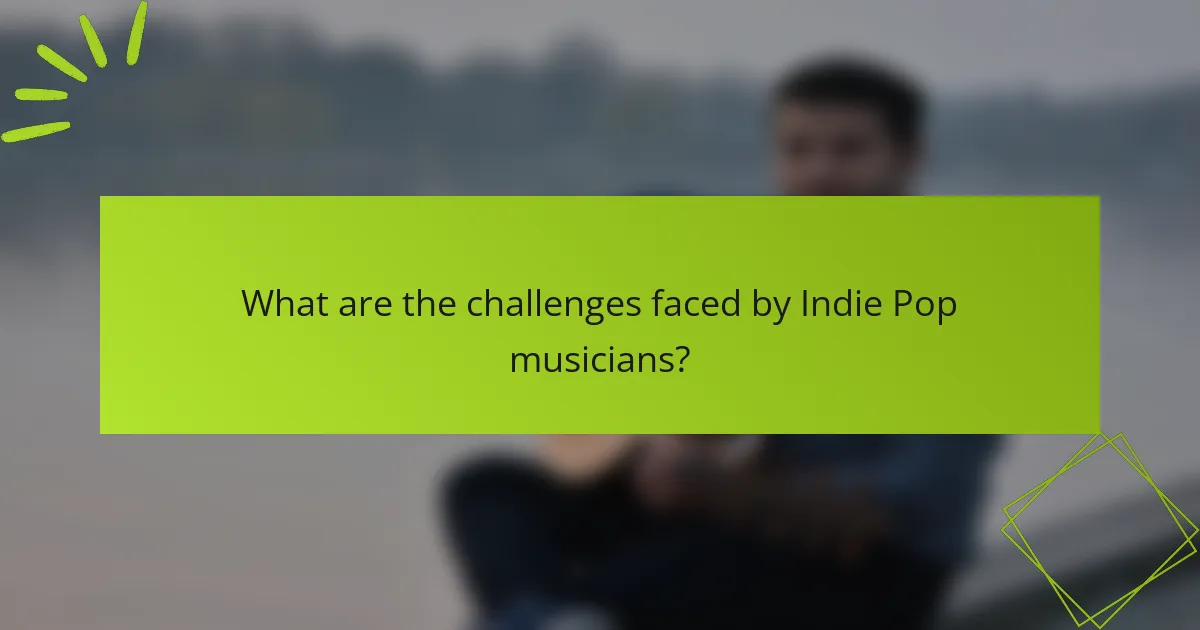
What are the challenges faced by Indie Pop musicians?
Indie Pop musicians encounter various challenges that can hinder their growth and success in the music industry. Key issues include competition with mainstream artists, limited financial resources, and difficulties in gaining exposure.
Competition with mainstream artists
Indie Pop musicians often struggle to compete with mainstream artists who have substantial backing from major record labels. These artists benefit from larger marketing budgets, extensive promotional resources, and established fan bases, making it challenging for indie musicians to gain visibility.
To stand out, indie artists must develop a unique sound and brand identity. Engaging with niche audiences through social media and live performances can help create a loyal fan base. Collaborations with other indie musicians can also enhance visibility and broaden reach.
Additionally, leveraging platforms like Bandcamp and SoundCloud can provide indie musicians with opportunities to distribute their music directly to fans, bypassing traditional industry gatekeepers. This approach allows for greater creative freedom and helps build a community around their music.
